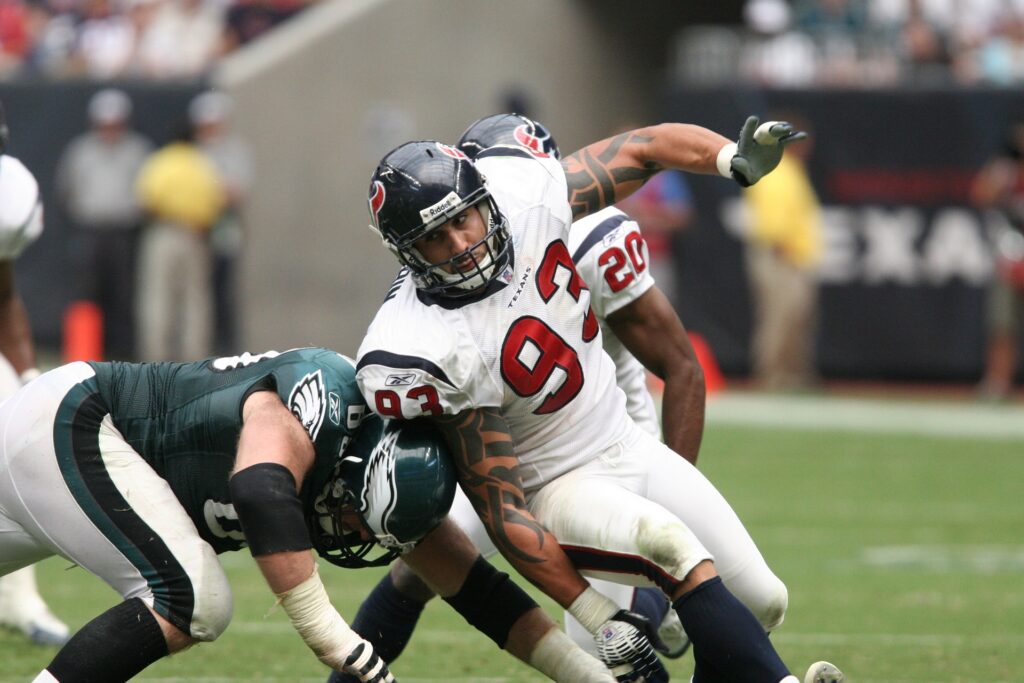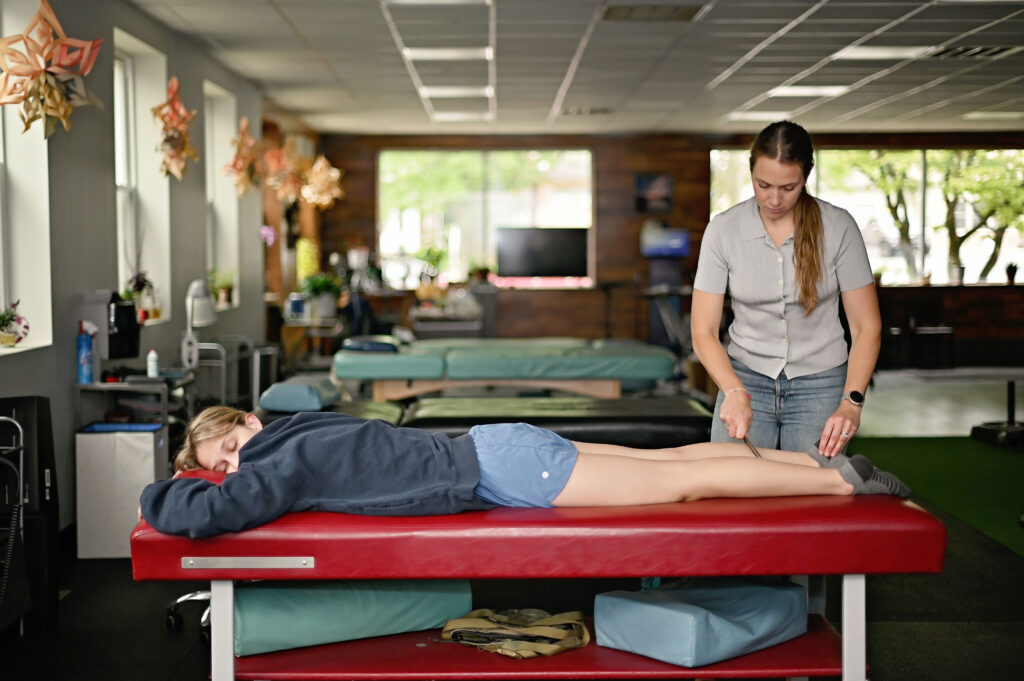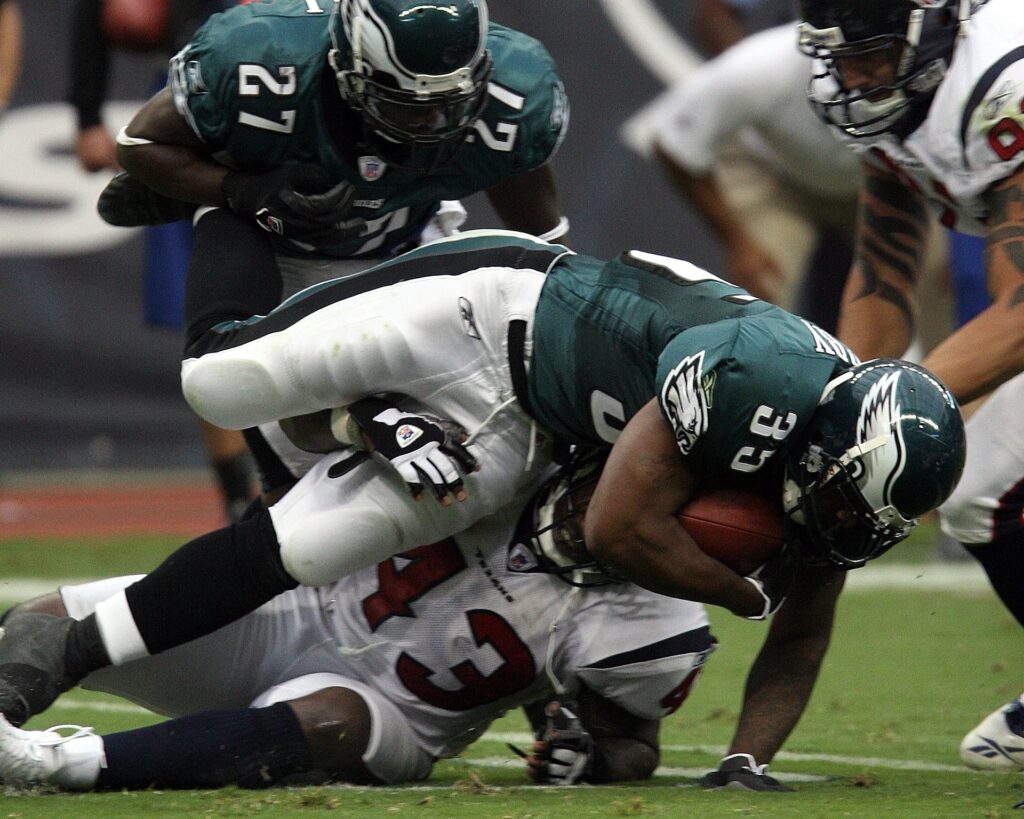Whether you’re an american football fan or not, get ready because the superbowl is here! This Sunday we are going to be watching the Philadelphia Eagles take on the Kansas City Chiefs in what is going to be an interesting match up! All sports have risks, but some types of injuries are more common when dealing with a particular sport. Let’s dive deeper into what the medial collateral ligament (MCL) does, how the injury happens, the differences in severity, and what recovery looks like.
The Medial Collateral Ligament (MCL)
The medial collateral ligament, or MCL, is found on the inside of our knee. It connects the upper part of our shin bone to the bottom of the thigh bone. An easy way to remember exactly where this is goes along with the word medial. Medial means the midline or middle of the body. The MCL’s biggest job is to stabilize the knee and to keep our shin bone in place (1). This stabilization keeps it from wobbling and feeling like it could buckle or give out.
How MCL Injuries Happen
Studies show that the most common knee injury in American Football caused by trauma or contact are medial collateral ligament (MCL) injuries. More than 75% of these injuries are caused by either being tackled or tackling an opponent (2). Why do you ask? It’s due to how the tackle happens and where that force hits your body. When someone injures their MCL it is typically because of trauma or force applied to the outside of the knee. This causes the knee to push inward towards the person’s midline. When that force is too great, the tendon can tear anywhere between a few fibers to the entire thing breaking in 2. This specific direction of force is called valgus force. While you’re being tackled there are large external forces pushing your body. If they’re pushing your knee in the wrong direction it leads to injury.

The other way this type of injury occurs is with improperly planting and twisting. Generally the “plant and twist method” is pretty common across all types of knee injuries. It really depends a lot on the way the knee is twisted that determines which part of the knee is affected.
Grades
There are 3 grades or levels of injury that you see with the medial collateral ligament. A grade 1 injury means that only a few fibers are torn. This typically means you have some pain in the area, but little to no swelling. Grade 2 is a bit more severe. You likely have a partial tear in the ligament and will feel pain, some instability in the joint, and see some swelling. Having a grade 3 injury is a full rupture or tear of the ligament. Fully rupturing the MCL leads to a lot of instability in the knee, pain, swelling, and difficulty moving in general.
MCL Recovery
How does something like this heal? The good news is that people typically make a full recovery and return to their daily sports and activities. What is most commonly prescribed is the RICE method. That consists of rest, ice, compression, and elevation. Your physical therapist or doctor may also use other tools such as stem therapy to encourage blood circulation. Increasing blood circulation to the area promotes healing. Depending on the severity of the MCL injury it can take weeks to months for a full recovery. Once you’re good to go, I’ll bet you’ll be back on that field in no time!

If you think you could be suffering from a medial collateral ligament injury don’t hesitate to see someone! Make sure you speak with a doctor to get a proper diagnosis. That way you can properly treat your injury and be back to normal in no time.
Prevent Potato-itis!
The Super Bowl is almost here and what the American population is most commonly afflicted with on this particular Sunday is….. POTATO-ITIS! This is spending a little too much time becoming one with our couches. Don’t fear! At Mobility-Doc we have you covered!!! Check in on your favorite social media platform tomorrow (2/11/23) for our favorite stretches to cure your potato-itis!
For now, we can keep our backs healthy with Jefferson Curls. If you haven’t tried them before, I highly recommend you do. They’re the perfect exercise to loosen up your entire spine!
Jefferson Curl Video: How to
References:
“Medial Collateral Ligament Injury (MCL).” Pennmedicine.org, Penn Medicine, https://www.pennmedicine.org/for-patients-and-visitors/patient-information/conditions-treated-a-to-z/medial-collateral-ligament-mcl-injury-of-the-knee.
- Lundblad M, Hägglund M, Thomeé C, Hamrin Senorski E, Ekstrand J, Karlsson J, Waldén M. Medial collateral ligament injuries of the knee in male professional football players: a prospective three-season study of 130 cases from the UEFA Elite Club Injury Study. Knee Surg Sports Traumatol Arthrosc. 2019 Nov;27(11):3692-3698. doi: 10.1007/s00167-019-05491-6. Epub 2019 Apr 4. PMID: 30949749; PMCID: PMC6800843.






